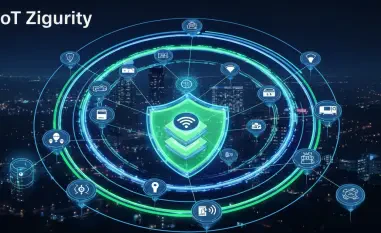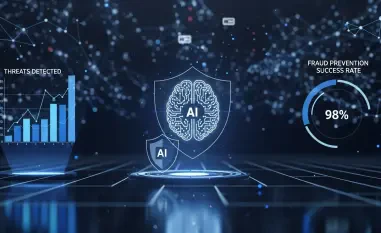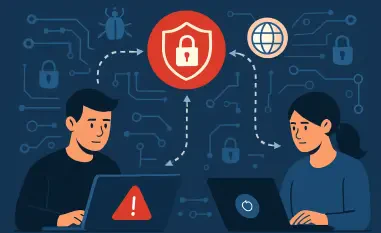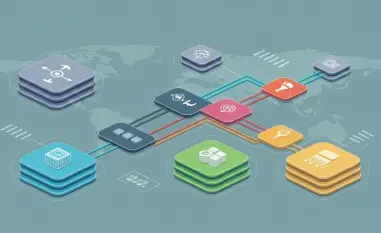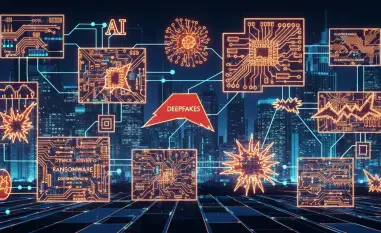What happens when digital threats evolve at a pace that outstrips even the most advanced defenses, leaving cybersecurity experts scrambling for solutions? At the recent Black Hat USA conference, a jaw-dropping statistic sent ripples through the cybersecurity community: malware complexity has surged by an astonishing 127% in just six months. This isn’t merely a data point; it signals a critical turning point in the battle against cybercrime. From individuals to global enterprises, the implications of this rapid escalation are profound, demanding immediate attention and action. Dive into this pressing issue as the scale, drivers, and potential solutions to this growing menace are explored.
The Alarming Reality of Escalating Cyber Threats
The revelation at Black Hat USA underscores a chilling truth: cybercriminals are not just keeping up—they are racing ahead. This 127% increase in malware sophistication within half a year points to an unprecedented challenge for cybersecurity professionals. No longer confined to simple viruses or basic phishing attempts, today’s malware represents a sophisticated arsenal designed to infiltrate, disrupt, and destroy with surgical precision. The urgency to address this trend cannot be overstated, as it threatens the very foundation of digital trust and security.
This surge matters because it directly impacts every corner of society. Businesses risk catastrophic financial losses and reputational damage from data breaches, while governments face potential disruptions to critical infrastructure. Even individual users are not spared, with personal information becoming a prime target for theft. The stakes are higher than ever in an era where digital connectivity is integral to daily life, making this statistic a clarion call for stronger, smarter defenses.
Unraveling the Roots of a 127% Complexity Spike
Behind this staggering figure lie several key drivers that fuel the rapid evolution of malware. Attackers now employ advanced evasion tactics, crafting code that can adapt and morph to dodge traditional antivirus solutions. These polymorphic threats are designed to remain undetected, often hiding within legitimate processes until the moment of impact. Such innovation by adversaries reveals a level of resourcefulness that challenges even the most robust security frameworks.
Another critical factor is the shift toward highly targeted attacks. Unlike the scattershot malware of the past, modern threats are often customized for specific industries or organizations, exploiting unique vulnerabilities with devastating accuracy. For instance, ransomware campaigns targeting healthcare providers have crippled hospital systems, delaying patient care. This precision amplifies the damage, as tailored attacks are harder to anticipate and mitigate.
The impact of this complexity is evident in real-world scenarios. Recent reports highlight malware capable of disabling entire power grids or siphoning sensitive data over months without detection. These incidents are not isolated; they reflect a broader trend of escalating destructive potential. As attackers refine their tools, the need for equally sophisticated countermeasures becomes undeniable, pushing the cybersecurity industry to adapt at an accelerated pace.
Voices from the Frontlines: Expert Warnings
At Black Hat USA, seasoned cybersecurity researchers sounded the alarm on this growing crisis. One expert noted, “Attackers are pouring significant resources into building malware that’s not only harder to spot but also far more destructive when it strikes.” This insight points to a disturbing reality: adversaries are investing heavily in innovation, often outpacing the defensive capabilities of many organizations. Such warnings carry weight, coming from those who witness the evolving threat landscape daily.
Beyond expert commentary, conference discussions highlighted the role of emerging technologies in this battle. Cybercriminals are increasingly leveraging artificial intelligence to automate attack processes, enabling rapid testing and refinement of malicious code. A case study shared at the event detailed how a major financial institution lost millions due to an AI-driven malware strain that evaded detection for weeks. These real-world examples bring the abstract threat into sharp focus, illustrating the urgent need for action.
The human element also emerged as a critical concern among professionals. Many attacks still begin with simple social engineering tactics, exploiting user error rather than technical flaws. Experts stressed that while technology is vital, the human factor remains a significant vulnerability. This perspective adds another layer to the discussion, emphasizing that combating malware requires a holistic approach beyond mere software solutions.
The Broader Implications for Digital Security
The ripple effects of a 127% surge in malware complexity extend far beyond individual breaches. Critical infrastructure—think power plants, water systems, and transportation networks—faces heightened risks as attackers target systems that underpin society. A single successful attack on such a network could lead to widespread chaos, with consequences ranging from economic downturns to loss of life. This reality elevates the issue from a technical problem to a matter of national and global security.
Financial sectors are equally at risk, with sophisticated malware capable of draining accounts or manipulating markets undetected. Small and medium-sized enterprises, often lacking the resources for advanced defenses, are particularly vulnerable to these threats. The cascading effect of such attacks can destabilize entire industries, as seen in recent ransomware incidents that forced companies into costly downtime. These examples underscore how the stakes have grown alongside malware sophistication.
Moreover, the psychological toll on victims cannot be ignored. Organizations hit by breaches often grapple with eroded customer trust, while individuals face the stress of identity theft or financial ruin. This intangible cost adds another dimension to the crisis, highlighting that the damage from modern malware transcends monetary loss. Addressing this multifaceted threat demands strategies that account for both tangible and intangible impacts.
Strategies to Counter the Malware Menace
Confronting this escalating challenge requires actionable, forward-thinking measures. Organizations must prioritize deploying next-generation threat detection systems that utilize machine learning to identify subtle anomalies before they escalate into full-blown attacks. Such tools can analyze patterns in real time, offering a proactive shield against adaptive malware. Staying ahead means embracing technology that evolves as quickly as the threats themselves.
Equally important is the need for regular software updates to close known vulnerabilities. Outdated systems are low-hanging fruit for attackers, often serving as entry points for sophisticated malware. Alongside this, employee training programs should focus on recognizing phishing attempts and other social engineering tactics, which remain a common vector for infection. Empowering staff with knowledge can significantly reduce the risk of human error triggering a breach.
Collaboration across sectors also holds the key to building resilience. By partnering with industry peers, government agencies, and academic researchers, organizations can share threat intelligence and develop collective defenses. Initiatives to pool resources and expertise can accelerate the development of countermeasures, ensuring that no entity faces this battle alone. These combined efforts are essential to outmaneuvering cybercriminals who thrive on isolated, unprepared targets.
Reflecting on a Sobering Milestone
Looking back, the revelation at Black Hat USA served as a stark reminder of how swiftly the digital threat landscape can shift. That 127% surge in malware complexity over six months was not just a statistic; it was a warning etched into the minds of cybersecurity professionals and organizations alike. The discussions and insights shared during the conference painted a picture of an adversary that is relentless, innovative, and increasingly dangerous.
Moving forward, the path is clear: adaptation must outpace escalation. Investing in cutting-edge technologies like AI-driven defenses is no longer optional but imperative. Strengthening human awareness through education stands as a critical pillar, ensuring that technology and people work in tandem. Most importantly, fostering global collaboration emerges as the linchpin for sustained progress, uniting diverse stakeholders against a common foe.
As the dust settled on that pivotal event, one truth lingered—complacency is the greatest risk of all. The cybersecurity community must commit to continuous innovation, anticipating threats before they materialize. Only through such vigilance and collective resolve can the tide be turned against increasingly complex malware, safeguarding the digital world for generations to come.


